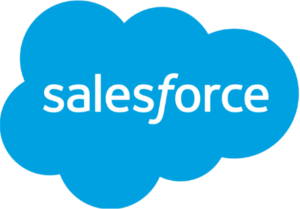The Secret Weapons to Retaining Top Sales Talent
Reducing Sales Churn
Most B2B sales teams operate on the 80:20 rule – 80% of your revenue comes from the top 20% of your team. Losing a great sales rep can cost far more than the value of making 5 great hires – your superstars walk out the door not just with their skills, but with their contacts, relationships and years of know-how.
Retaining your top performers is usually the single most important part of talent management.
Sometimes you lose a “star” to another company’s offer out of the blue that is just so great, you can’t compete, and they can’t say no. (Even though you hate losing them, there’s often a pretty nice feeling when someone you’ve coached goes on to something really great).
But as a sales leader, most of your top performers leave for reasons that you have control of.
A large Gallup poll concluded that three-quarters of people who voluntarily quit jobs do so because of their immediate boss or supervisor. If this becomes a pattern, you need to understand the source.

How to Reduce Churn
As the old saying goes – “People leave bosses, not companies.”
Here are a few simple steps you can take to reduce sales churn and keep more of your best performers.
Segment your team based on competencies
It still amazes me how many mature sales organizations don’t have a simple “competency framework” to guide both development needs and leadership styles. So many managers adopt a “one size fits all” approach to their team members – yet everyone has different needs, motivations, dreams and capabilities.
Experienced reps become bored very quickly when they are treated the same way as the new hires and the “middlers”. And bored top performers leave for something more interesting.
Implement a simple process that builds up a competency picture of your team’s strengths and weaknesses over time. Don’t delegate this to your HR team – you’ll often end up with something that is overly complex, and not integrated with the sales managers’ regular day-to-day workflow.
As this picture builds up, it feeds your “coaching engine” which drives not just talent retainment, but sales performance. Here is a simple tool that gives you this capability out-of-the-box.
The mediocre quit when you bring in a great boss.
The great quit when you bring in a mediocre boss.
– Jason Lemkin, CEO of SaaStr
Teach your Managers to Coach
Most front-line sales managers are promoted into the role because they were great salespeople. But there is a massive difference between the skills of a “super-rep” and those of a leader. Coaching is a skill, just like selling, yet most sales management training neglects this. It’s all about the pipeline – managers can coach deals, but rarely people.
If you’ve implemented the competency framework above, you’ve now given the managers a great tool to start to lead their people based on individual needs:
- TEACH – New hires and underperformers will generally be “told” what to do. (Think of the 80’s movie “Karate Kid” – paint the fence, wash the car). Feedback (as opposed to coaching – most managers don’t know the difference) can be valuable here, but this style of leadership is short-term – it gets old very quickly.
- COACH – This is the best approach for the “middlers” – those who are good but not great. These reps represent the biggest growth opportunity on a “revenue per rep” basis, and this is where “super-rep” managers really struggle. Coaching is about helping the rep surface their own answers – based more on questioning than feedback, great coaching achieves buy-in from the rep.
- MOTIVATE – Your stars don’t need a lot of coaching, and they hate being told how to do their job (they often know more about selling than their boss does). Managers need to understand what motivates these people. Leaders can then focus on two things for their top performers – giving them challenging stretch goals, and creating an environment where success is possible (including clearing out obstacles that may impact success). The best leaders package these stretch goals up in a way that supports the superstar’s other goals. (for example, if a rep wants a career path to being a manager, merge a stretch revenue goal with a mentoring goal helping others on the team). Great leaders don’t lose a lot of their top talent, because they allow their superstar rep to grow in a direction that motivates the rep.
With the right tools, your managers can start to build a coaching and leadership plan for each person on their team, delivering both higher productivity and reduced churn.
Good selling!

Teach your managers to coach.
SWIFT™ for
Supercharge your CRM with a coaching and performance accelerator.
Interested in a fully integrated Salesforce app that delivers value-added call planning, transforms your managers from super-reps into coaches, and gives leaders a real-time dashboard of team competencies?
Swagger Sales™ trains your team to perform better and gives you the tools to track progress.
The dashboards bring all the information into one place – it’s really about accountability, you can look at it very quickly to see if you have a problem in a certain area.
Kim Moller, Senior Vice President of Sales
MiMedx Group, Inc


